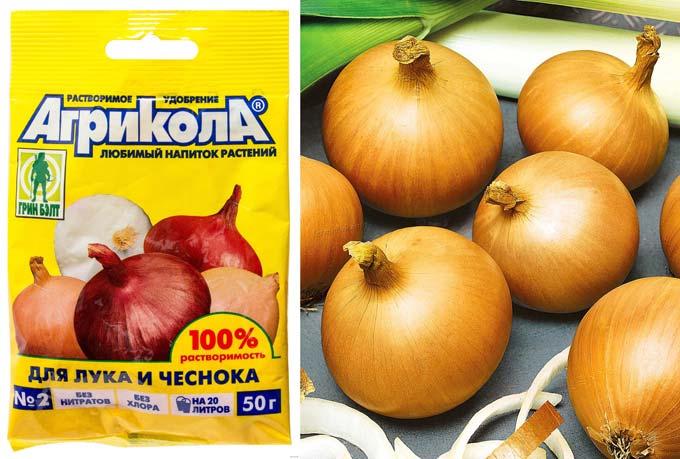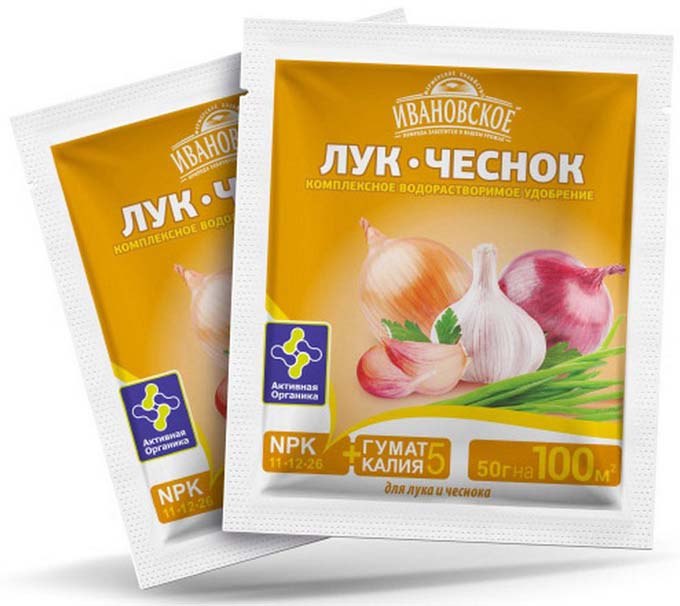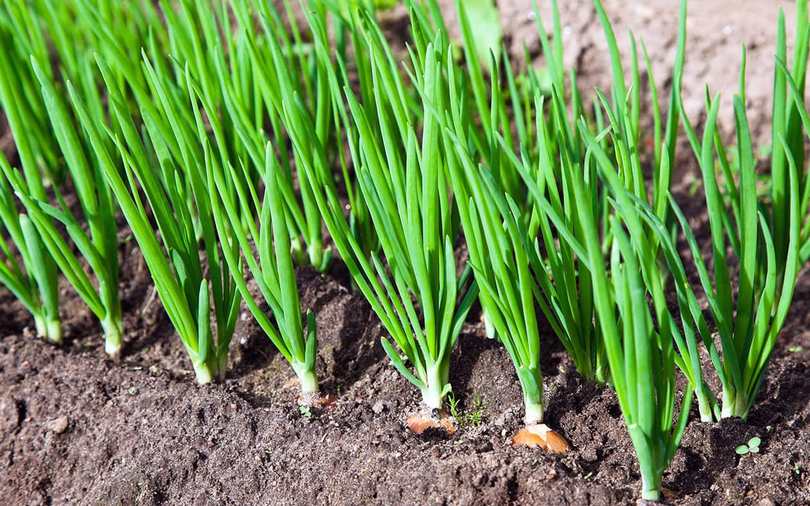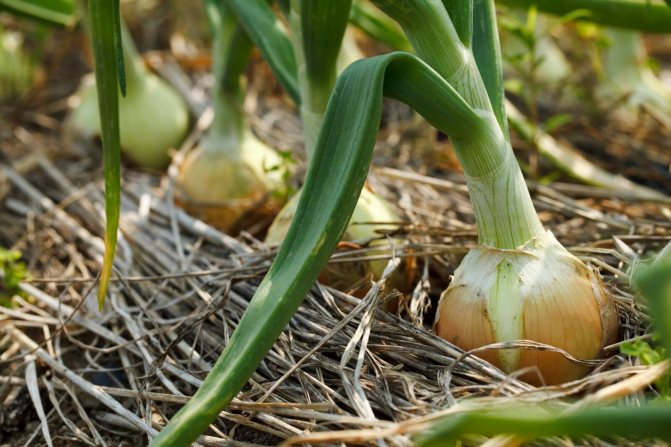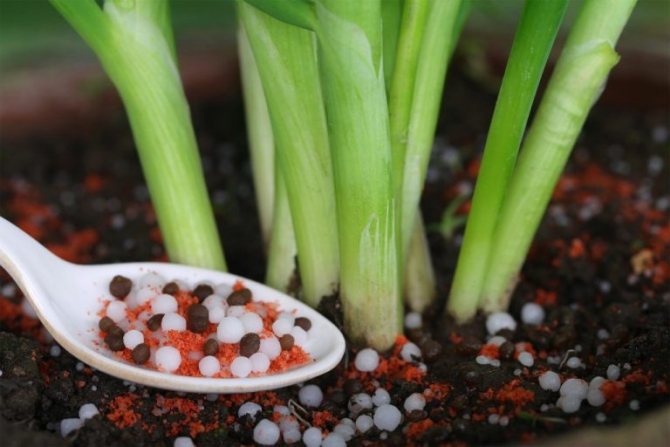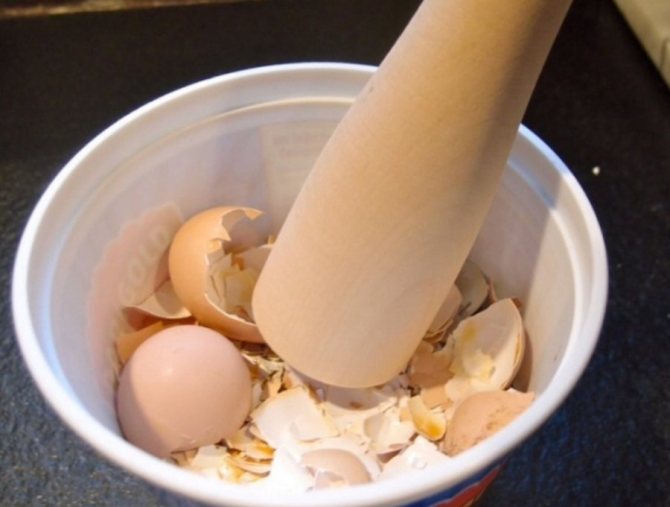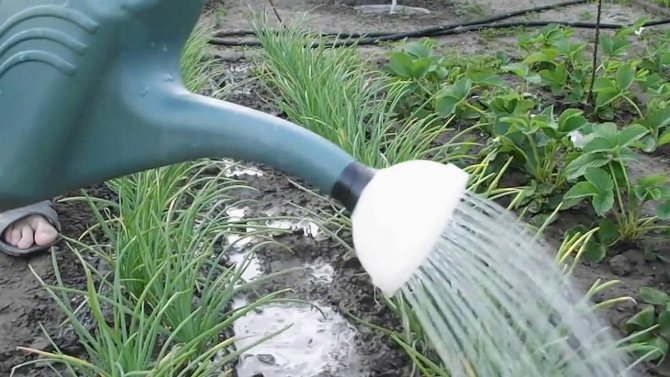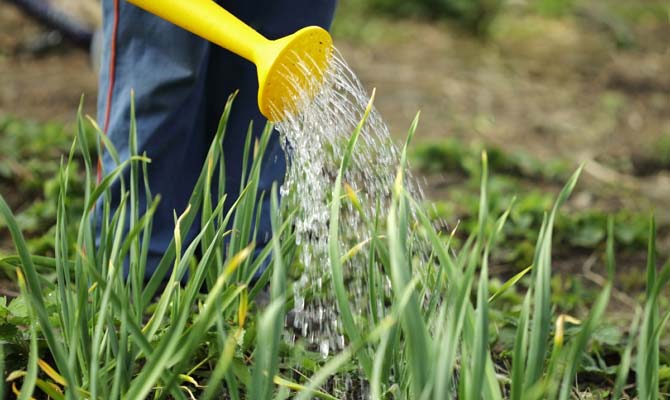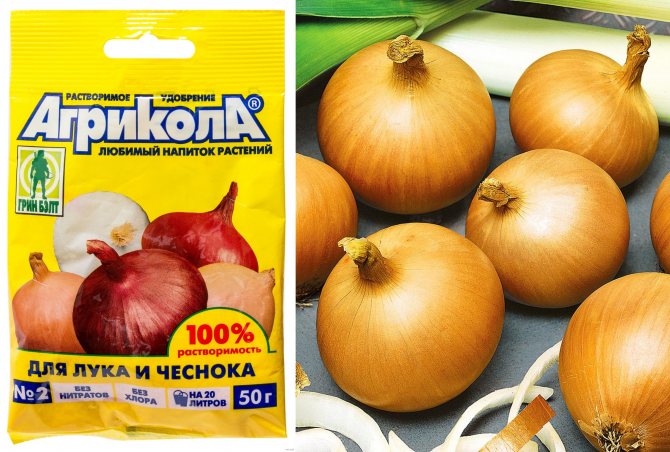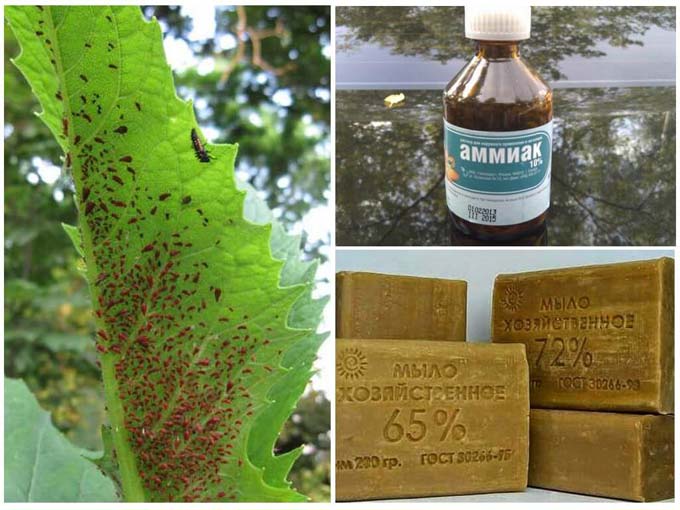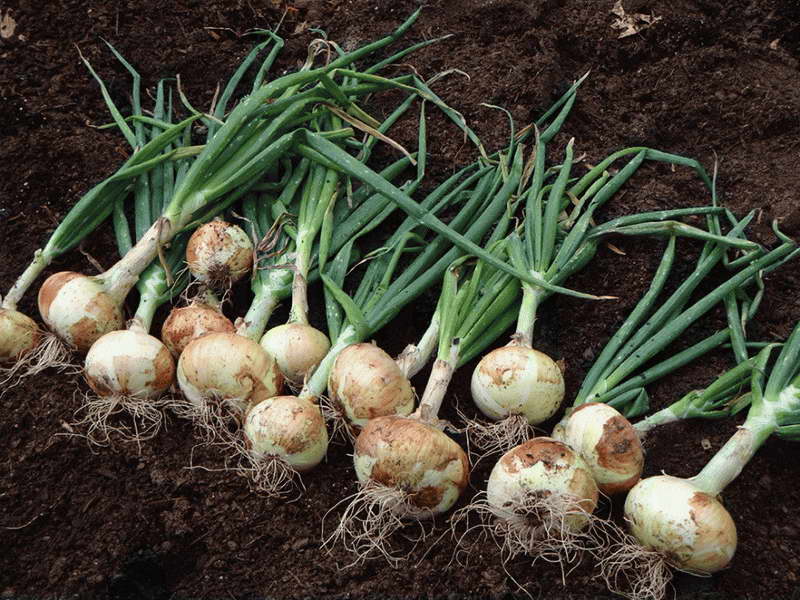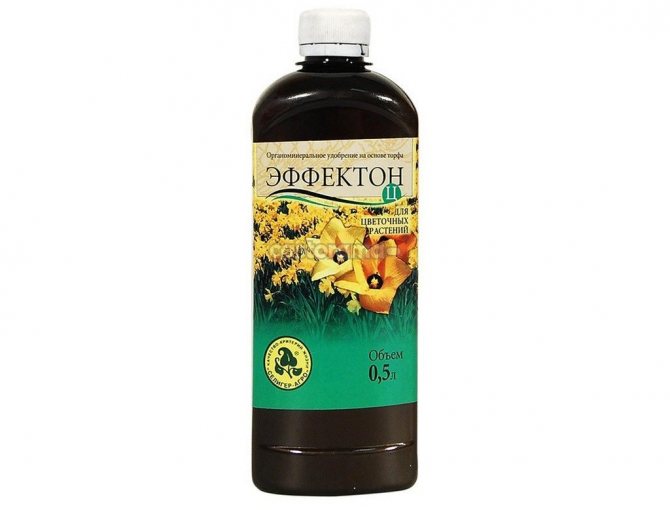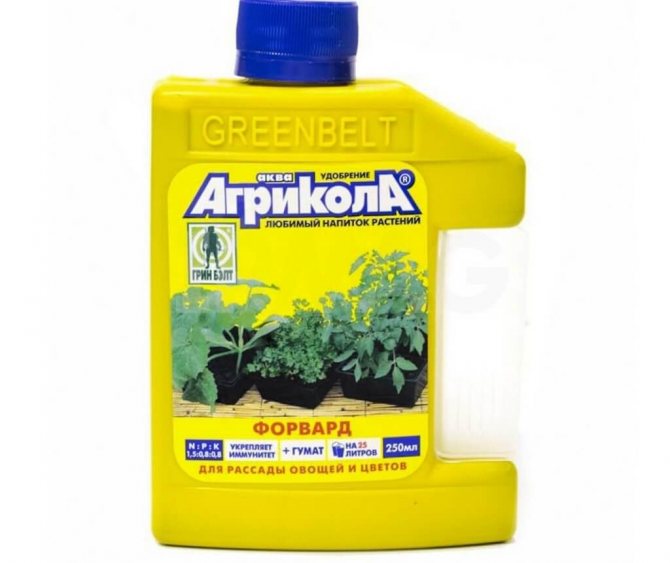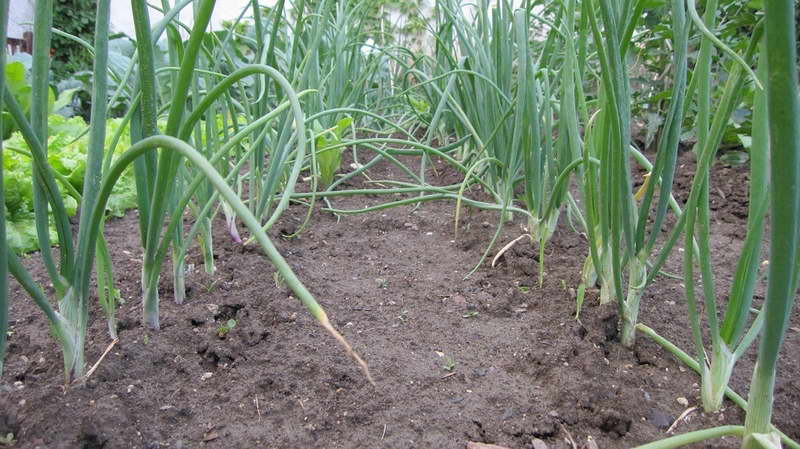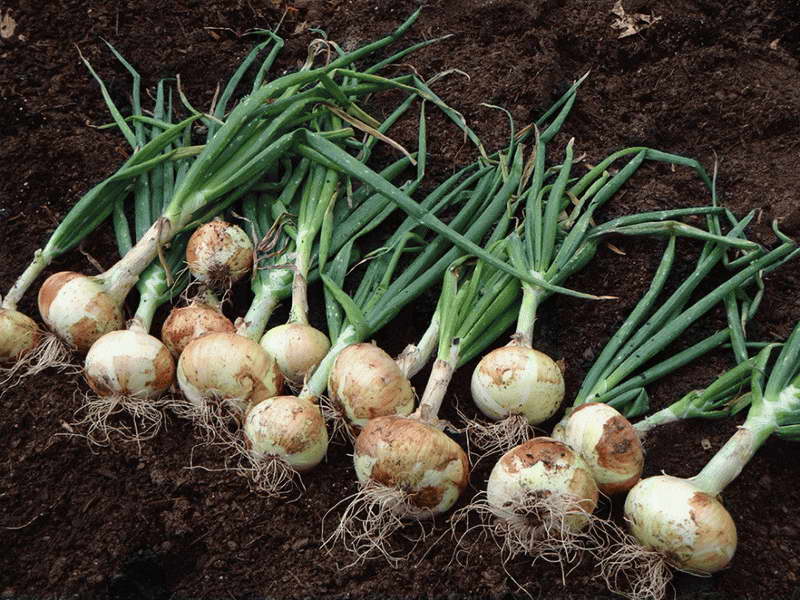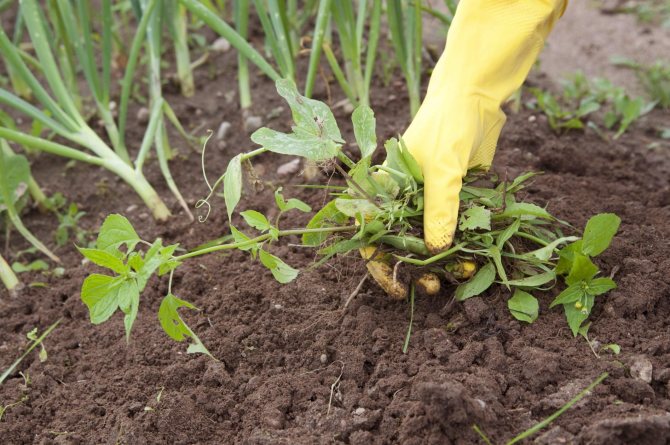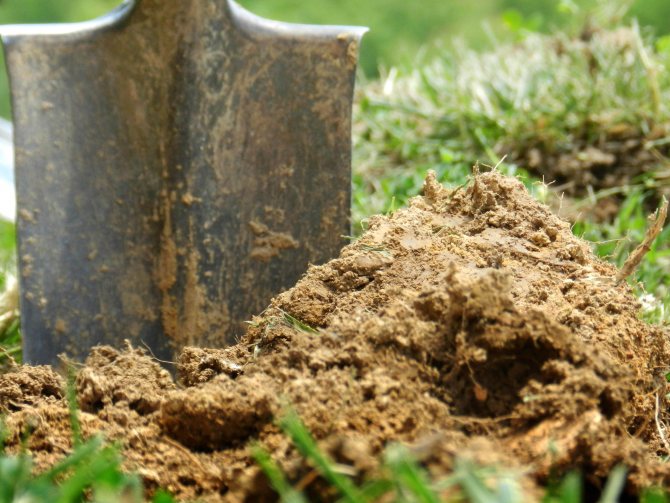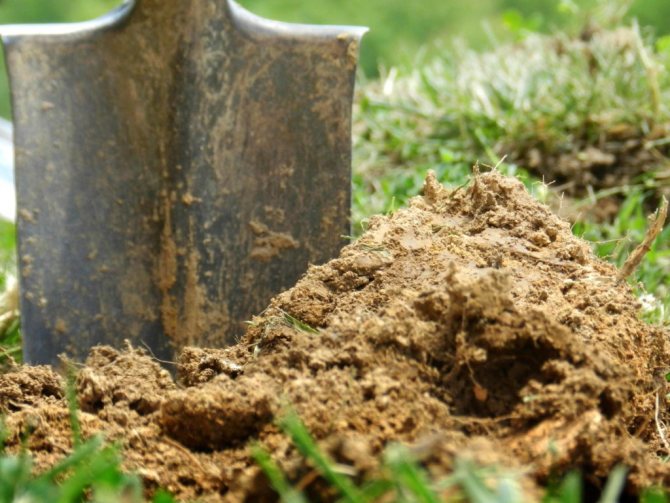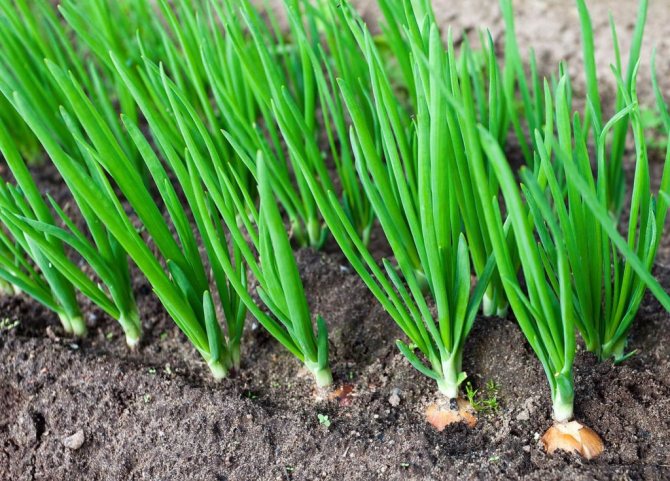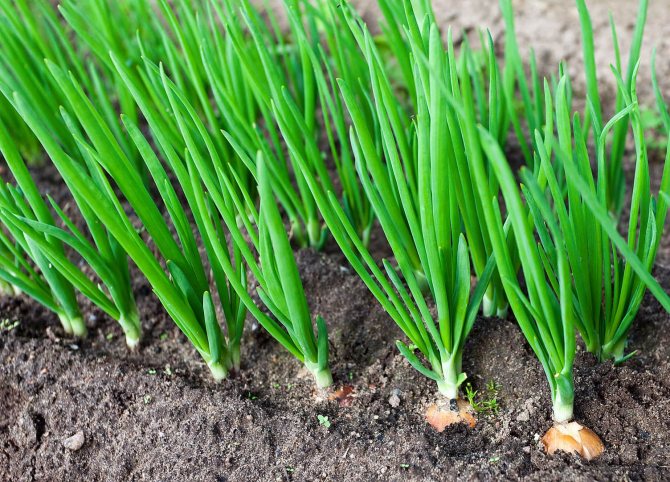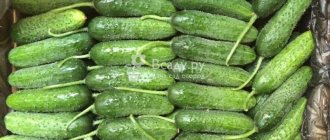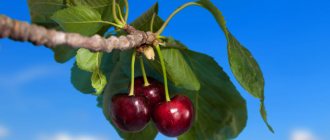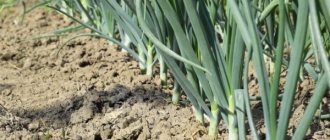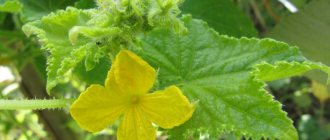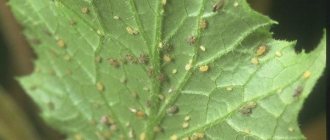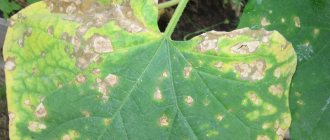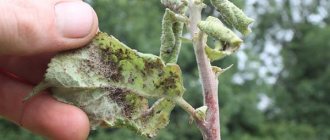Heading: Gardening Reading: 12 min Views: 57
Green onions in the spring in the beds pleases the eye of the gardener with strong sprouts. However, despite its unpretentiousness, this culture needs regular care and attentive care. Either the onion fly will start to spoil the seedlings, then the root rot, then the late blight. Therefore, it is necessary to fertilize the onions from the very beginning - even during planting. You also need to choose high-quality seed for onions for turnips and feathers. This will be discussed in the article.
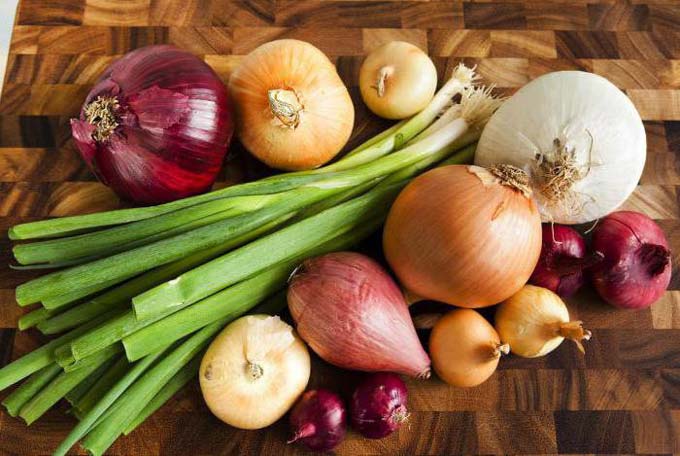
How to choose material for planting


You can grow onions for a turnip from nigella or arbazheka. In the first case, they mean onion seeds. When buying them in a store, pay attention to the expiration date. Expired seed may not sprout. Arbazheyka is called small onions grown in the first year from nigella. Their diameter ranges from 8 mm to 2 cm.
It is important to choose the right variety suitable for the local climatic conditions. When grown in the southern regions, onions adapted to cold climates will grow feathers all the time, and the bulb itself will remain medium in size. The cultivar intended for cultivation in the north will quickly form bulbs, ripen and stop growing.
How to prepare a site
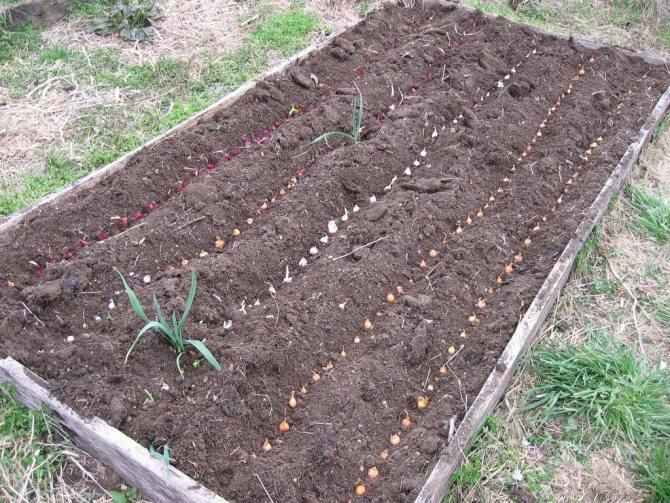

A bed for sowing onions is prepared in the fall. Taking into account the rules of crop rotation, they select a site where the following crops used to grow:
- eggplant;
- pepper;
- cabbage;
- tomatoes;
- legumes.
The selected area is dug up with the simultaneous introduction of humus or compost. Too heavy soils are lightened by adding peat. Since onions do not tolerate high acidity, lime is added to the soil if necessary.
In the spring, the area selected for the garden bed is loosened, all weeds are destroyed and treated with herbicides. Then a high bed is formed so that it is well warmed up by the sun's rays. Ash is used as fertilizer, mixing it with soil.
Important! If fertilizers were not applied in the fall, they are added before sowing. The bed is dug up and rotted manure or compost is introduced to a depth of 15 cm. If there is no organic fertilizer, ammonium nitrate or urea is added to stimulate the initial growth of green mass.
When planting bulbs, take into account that the size of the ripe crop depends on the distance between them. To obtain a large underground part, the seedlings are placed with an interval of 10 cm.At the same time, a distance of 25 cm is left between the rows. Such a planting scheme, subject to all other growing rules, gives a rapid development of bulbs and an increase in mass.
Top dressing rules


Even the most unpretentious cultivated plants need nutrients. The composition of the soil determines the conditions under which the plant develops, how quickly its fruits are formed. Therefore, in order to harvest a rich harvest, they observe all the rules of agricultural technology and regularly feed the plants. Onions are among those plants that actively absorb nutrients from the soil. Therefore, the soil is depleted very quickly. Therefore, feeding during the growing season is administered 2-3 times.
For a good growth of the bulbs, feeding is carried out according to the following rules:
- Do not use fresh manure as fertilizer, as it can cause burns on the plant.
- When applying fertilizers, they try to prevent the product from getting on the green part of the onion.
- Organic fertilizers are applied only in accordance with the recommended dosage. Exceeding it stimulates the growth of feathers, and the bulb itself remains small.
- For quick and more complete absorption of fertilizers after fertilizing, the bed is watered and the soil is loosened.
- For 20 days before the start of the harvest, feeding is stopped. Otherwise, the crop will ripen for a long time and be poorly stored.
The best time for fertilization is in the morning or evening hours, while there is no active sun. At the same time, the weather is chosen dry and quiet.
Useful Tips
In order not to harm the onion, you need to feed it correctly and using suitable fertilizers for this:
- Feed onions are recommended immediately after rain or watering.
- To contribute feeding for better feather growth is needed only if the bushes are grown for greenery. The yellowing of foliage in autumn is a completely natural process. Therefore, the bushes are fed with folk remedies only if the feathers turn yellow in summer.
- Fertilizersprepared with the use of yeast, they are introduced only into pre-moistened and well-warmed soil. Therefore, it is recommended to feed onions with such a remedy only in late spring, summer and early autumn.
- Introduction fresh manure into the soil can cause the development of fungal diseases or slow down the formation of bulbs.
- Introduction a large amount of organic matter in the soil can cause active growth of feathers, which will have an extremely negative effect on the formation and development of the head.
- Nutrient solution, prepared on the basis of mullein or chicken manure, water the bushes directly under the root. You can't get it on the feathers.
But in order to get a rich harvest of onions, top dressing alone is not enough. It must be properly cared for, as well as protected from diseases and pests.
When to fertilize
For the first time, fertilizers are applied 15 days after planting, using nitrogen-containing substances. At this time, the first shoots already appear. Then the applied fertilizer activates the growth of the green part. If the weather is humid at this time, they refuse mineral fertilizers. For plant nutrition, there will be enough fertilizers applied to the soil in the fall.
20 days after the first portion of top dressing, fertilize is applied again. Now they use products with a low nitrogen content and an increased concentration of phosphorus and potassium. Such fertilizers stimulate the growth of bulb mass, help the plant to quickly emerge and grow actively.
Important! To avoid the invasion of pests after top dressing, even before using fertilizers, the plants are sprayed with an ash solution or showered with tobacco crumbs.
Sometimes onions start to ache due to a deficiency of any nutrients. You can understand which elements are missing by the appearance of the plants:
- if the plant lacks nitrogen, its growth slows down, the aerial part becomes pale and becomes covered with yellowish spots;
- potassium deficiency causes necrosis in the apical part of the feathers, which gradually descends to the bulb;
- with an insufficient amount of phosphorus, the plant also grows slowly, brownish areas form and grow rapidly on the feathers;
- if the plant has little zinc, the greens curl or remain spread over the surface of the soil;
- from the lack of copper, the feathers become thin, the pigment is gradually removed and the greens gradually fade.
Often there are no clear signs of a lack of a separate element, but mixed signs are present. Therefore, the condition of the plant is assessed in a comprehensive manner. When depleted, the soil needs different macro- and microelements.
How to feed in spring?


In spring, onions need nitrogen most of all, at least in early spring, when the green mass is growing.
Therefore, first of all, any mineral and organic substances containing an abundance of nitrogen will be useful at this time.
This category includes:
- sodium nitrate;
- urea;
- ammonium sulfate;
- ammonium nitrate;
- bird droppings.
Important! For onion feeding to be effective, it must be carried out after rain or watering.
Use such fertilizers according to the instructions or recipes, which will be described in the following paragraphs.
During this period, you can also mix phosphorus into fertilizers, but only in small quantities, therefore complex mineral fertilizers are used extremely rarely.
Spring feeding products
The order of fertilization is influenced by the purpose of growing the crop. The easiest way is to fertilize onions for greens. If you need to grow a large turnip, an integrated approach is used.
If the nutrients were not applied in the fall, the following fertilizers are used simultaneously with the spring digging of the soil:
- 15 g of potassium salt;
- 20 g of urea;
- 30 g superphosphate;
- 5 kg of humus.
This mixture enriches the composition of depleted soil areas and simplifies plant maintenance when growing onions for turnips. Additionally, peat, humus or wood ash are added to the soil as fertilizers in the spring.
Instead of adding individual nutrients, you can use ready-made mineral complexes. Top dressing with Vegeta or Ideal gives a good result. These drugs are diluted in water and used according to the attached instructions.
When the first shoots hatch, nitrogen fertilizers are added. Do not use fertilizers during heavy rainfall. Nitrogen dissolves in water, so feeding at this time will be useless.
Mineral or organic formulations - which is better
These types of fertilizers are applied both individually and together. Organic matter normalizes water exchange in the soil and improves its structure. At the same time, mineral fertilizers penetrate faster to plant roots.
Potassium, which is found in potassium chloride, ash, potassium salt and potassium sulfate, is essential for onions. The culture will be much easier to tolerate drought and temperature extremes. With a sufficient amount of this trace element in the soil, the culture tolerates transportation and storage well.
To increase the yield, only organic matter is not enough, the plant needs superphosphate. This complex mineral composition will help improve the onion's immunity, while the greens will grow violently, the bulbs will fill evenly. The culture will resist diseases and pests.
Onions growing poorly on greens? In this case, you cannot do without nitrogen, which stimulates the growth of any culture well. This trace element is found in organics:
- horse dung;
- mullein;
- bird droppings.
Summer application of dressings
Fertile soil, provided that fertilizers are applied in the fall, eliminates the need to reuse additional fertilizing. Otherwise, summer use of the nutrients produces a bountiful onion crop. Therefore, it is impossible to refuse feeding in the summer.
For the third time, onions are fed in late June or early July. During this period, potassium-phosphorus dressings are used containing copper and other useful elements:
- a solution of 10 liters of water and 30 g of nitrophoska;
- a solution of 10 liters of water, 60 g of superphosphate and 30 g of potassium chloride.
This procedure speeds up the formation of the bulb and stimulates growth. To make the treatment more effective, mixed formulations are used. You can use the store mineral complexes "Biomaster", "Fasco", "Agros". The drugs are diluted and used according to the instructions.
Which variety to choose
It is a mistake to think that any variety is suitable for forcing. In order to get up to 7 kg of feathers from a square meter, a multi-pronged bow is planted.Of course, one variety does not guarantee a large harvest; you cannot do without fertilizer for onions per feather. To understand that the bulb is multi-edged is simple, for this you need to cut off the top of the head and look at the cut. The variety is multi-primordial if several growth points are visible.
You can opt for one of the varieties:
- Arzamas local;
- Bessonovsky local;
- Rostov local;
- Chernihiv;
- Strigunovsky.
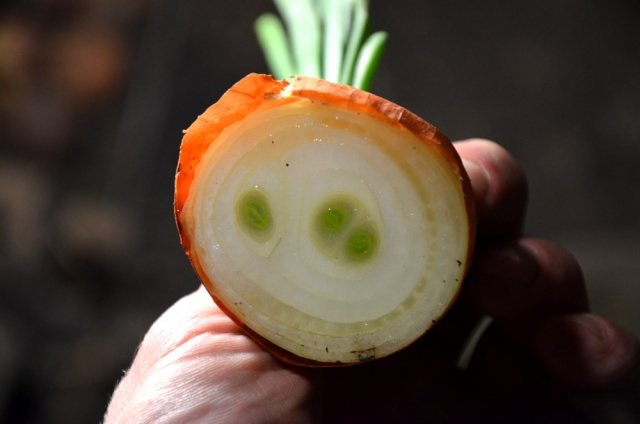

See the table for the main characteristics of the proposed varieties:
Number of growth points
from 40 g to 90 g
well stored, cold-resistant, often suffers from onion fly infestations
from 35 g to 46 g
disease resistant, well stored
from 30 g to 60 g
from 40 g to 50 g
from 45 g to 80 g
Tips from experienced gardeners
Tips from experienced gardeners will help you properly prepare seed and choose fertilizer for green onions. If you plant unprepared bulbs in the ground (substrate), then the greens will wait a long time. The rate of feather regrowth and its amount stimulate:
- the selected planting material is heated for 2-3 days at a temperature close to 40 ° C;
- cut off the neck of each onion by the shoulders;
- soaked in warm water (40-50 ° C);
- keep 3 days in a wet cloth.
It is easy to explain the need for the listed activities. A novice vegetable grower should be aware that seemingly healthy planting material can be contaminated. The main pests: onion fly, thrips. These pests will ruin the harvest in no time, even feeding green onions will not help.
The larvae are hiding under the husk, so there is no point in soaking uncut onions. In cut heads, water easily penetrates between the onion scales when soaked. Hot water kills pests. Top dressing of onions for greens can be done while soaking.
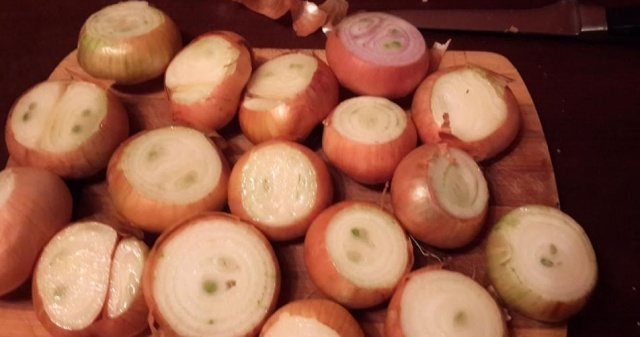

Four ways to soak
In the first method, pour the trimmed onions into a bag, immerse them in water heated to 50 ° C, keep in it for at least 10 minutes. Then the bag can be taken out and you can start planting. The described procedure disinfects the planting material.
The second method involves feeding with saltpeter, since you need to soak in its solution. Pour 70 liters of hot water (50 ° C) into a large container (building bath), pour only 1 tsp of ammonium nitrate. Keep the onion in the nutrient solution for 15 minutes. This method disinfects the heads and stimulates root formation.
The third method involves the use of potassium permanganate. It is added to cold water, the solution should be of low concentration. You need to soak for about 15 minutes. This method is used when there is a shortage of time and there is no hot water. There is only disinfection of the bulbs.
When processing the fourth method, use "Epin Extra". We take warm water, pour the entire ampoule of a growth stimulator into it. We hold the onion for no more than 15 minutes. Disinfection takes place with hot water, and the stimulant shortens the distillation period.
Fertilizer use in autumn
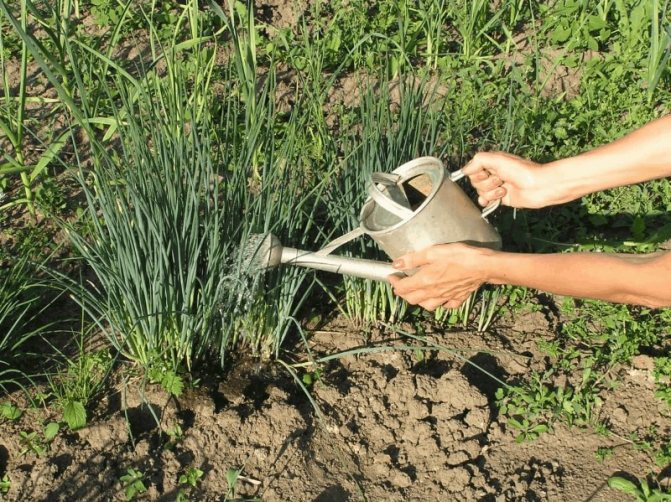

After harvesting, they plan to plant onions for the next season. First, the soil is disinfected. To do this, before applying fertilizer, the soil is spilled with a solution of 10 liters of water and 15 g of copper sulfate in 24 hours. The prepared volume is enough for 5 square meters of planting.
After that, the earth is dug up, old plant roots and weeds are removed. Simultaneously with the digging, 4 kg of humus are introduced for each square meter. If you plan to plant onion sets, add dolomite flour, crushed chalk or a special agent that neutralizes the increased acidity of the soil. Mixed fertilizers are used to improve the composition of highly depleted soils. Then, together with mineral complexes, organic matter is added.
Important! It is customary to plant some varieties of onions in the fall before winter. For them, the soil is fertilized a month before planting. This time is necessary for the nutrients to combine with the soil.
Organic and folk fertilizers for feeding onions
Not all gardeners trust mineral fertilizers. Some people prefer to use proven folk methods and safe organics to fertilize onions. Such funds are not harmful to health and do not accumulate in the soil.
First feeding
To saturate the soil with nitrogen in spring, different means are used that are sources of nitrogen:
- A slurry made from 10 liters of water and 250 ml of fresh mullein. This amount of top dressing is enough to process 5 m2 of plantings.
- Infusion of bird droppings. For its preparation, 500 g of chicken droppings are diluted in 10 liters of water. This top dressing is enough for 10 m2 of soil.
On sale there are ready-made fertilizing preparations of organic origin that saturate the soil with nitrogen. Top dressing with Agricola or Effekton-O gives a good result.
Some gardeners get a good harvest of onions after feeding with ammonia. It also enriches the earth with nitrogen. To prepare the working solution, dilute 30 ml of ammonia in 10 liters of water and water the onion beds. One bucket of this solution is enough for 3 m2. Due to the pungent smell of ammonia, after such treatment, it is possible to get rid of insect pests.
Second feeding
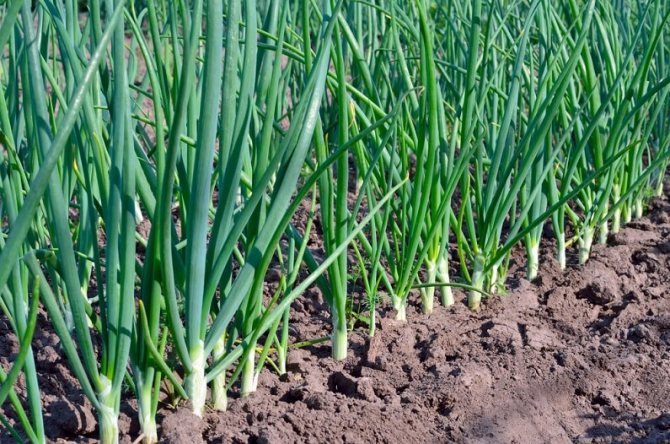

In summer, during growth, an herbal infusion is used to gain weight on the bulb. For its preparation, 1 kg of weeds is poured with 10 liters of water and left in a closed bucket in the sun for 5 days. Then add the same amount of water and watered with a solution of the garden. The received amount of fertilizer is enough to process 4-6 m2 of plantings.
From ready-made organic complexes, humic fertilizers, such as "Gumi-Omi" and similar fertilizers, are suitable as fertilizers for onions.
Yeast feeding with the addition of ash enhances the growth of onions. To prepare it, mix 200 g of wood ash, 100 g of raw yeast and 20 g of granulated sugar. The prepared mixture is diluted in 10 liters of water and left for 24 hours. Then the onion plantings are poured with liquid.
Another option for yeast feeding involves the use of ready-made herbal infusion, yeast and bread. The components are taken in equal amounts of 500 g and mixed with 10 liters of water. Then insist in a sealed container for 3 days and watered with a solution of the garden.
Third feeding


For the last feeding in the fall, humus is used, adding it in the amount of 1 bucket per square meter. You can use compost instead of humus. Also fertilize the soil with an ash solution. It is prepared from 1 bucket of water and 200 g of wood ash. This amount is enough for 2 m2 of soil.
Features of growing in the open field
The crop varieties proposed in the article are planted in late autumn or early spring. In this case, it is important to select only that planting material that has several primordia and its size in diameter is 3-4 cm.
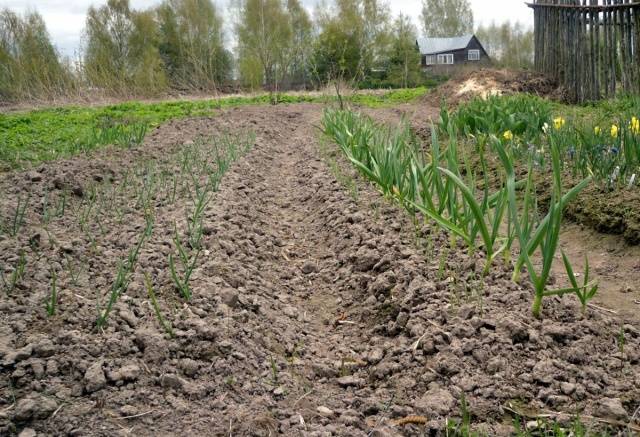

Before planting onions, the planting material is soaked in warm water and remains in it for the next 24 hours. To speed up germination, the tops of the bulbs must be cut off. This, among other things, improves the yield.
There are 2 ways to plant onions in open ground:
- The prepared planting material is placed in grooves at a distance of about 4 cm from each other, and after that, the beds are leveled with a rake. In this case, there should be a distance of about 20 cm between the grooves.
- The bulbs are stacked close to each other, and from above they are covered with soil by 3 cm. In this case, about 10 kg of planting material is consumed per 1 m2.
Important! When planting onions for the winter, after sprinkling with earth, you need to cover the planting with manure or humus.
In the spring, this covering material is removed, and the onion plantings are covered with a protective film.


Another option is to sow onion seeds. This can be done closer to the middle of summer, after fertilizing and loosening the soil. Before sowing, the seeds must be soaked in a solution of potassium permanganate. So, they will be disinfected and less susceptible to disease. After sprouting, the onion must be thinned out, leaving a distance of about 5 cm between it.
By winter, the beds with onions, the greens of which at this moment reaches 25 cm, should be sprinkled with peat or covered with straw. So, after the spring melting snow, you can pamper your family with green vitamins. To be able to use the green mass of onions in the summer, sowing seeds must be done in early spring.
Testimonials
Oleg, 45 years old
I always feed onions only with organic fertilizers. I have a barrel at my dacha where I keep the soaked grass. When necessary, I draw up a concentrated solution and dilute it with water. Then I water the beds with this agent. I use this top dressing in the first half of summer, so as not to oversaturate the soil with nitrogen before harvesting.
Nadezhda, 50 years old
I prefer to use ash for feeding onions. It accelerates the formation of bulbs and weight gain. In addition, such a top dressing eliminates bending of the leaves. As a result, all the nutrients go to the head. It turns out to be big and juicy. And the leaves fall on their own when the time comes.

